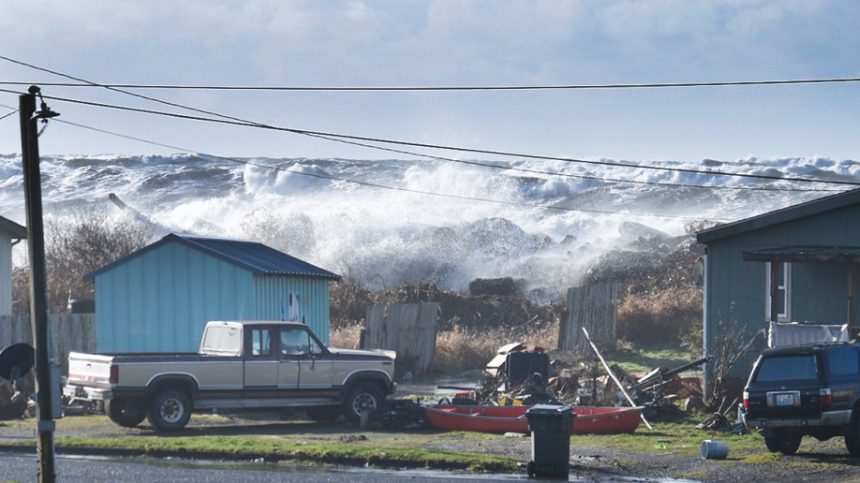This story was originally published by ICT and is reproduced here as part of the Global Indigenous Affairs Desk, an Indigenous-led collaboration between Grist, High Country News, ICT, Mongabay, Native News Online, and APTN.
A little over a century ago, the village of Taholah was established at the meeting point of the ocean and the Quinault River. Today, excessive rain or storm surges cause water to flood the village, engulfing homes and yards in saltwater. This poses a significant threat to the Quinault Nation, as the sea level rises and storm surges become more frequent.
To address these challenges, the Quinault Nation has developed a tribal master plan which includes relocating the village to higher ground to protect residents from floods and tsunamis. The plan emphasizes smart growth techniques and green infrastructure to prepare for future climate changes.
The nation has already laid the groundwork for the new village, with paved streets and infrastructure in place. However, the cost of building new homes poses a significant challenge, as many tribal members cannot afford the estimated $350-400,000 per house.
Despite financial constraints, the Quinault Nation is leading the way in climate relocation and resilience planning. They serve as a pilot project for community-driven relocation and are praised for their foresight and thoughtful planning. While the cost of relocation remains uncertain, the Quinault Nation’s proactive approach stands out in a world where many communities are unprepared for the impacts of climate change.






